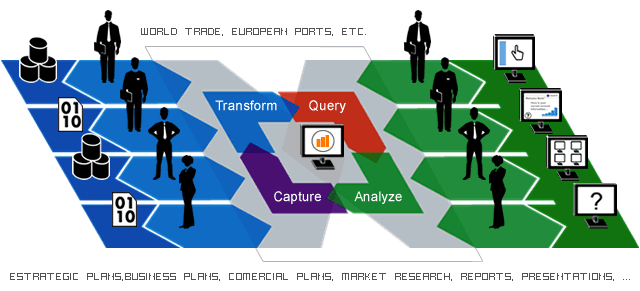Bases Portuarias













Complexity, poor usability, slowness. In Bases Portuarias we know how important is to have the possibility of doing what you want in a simple way. Our databases are designed following this philosophy.
A solution should be designed to efficiently solve the task for which it has been designed. However, in the majority of cases developers seem to place emphasis on their technical skills. We believe in simplicity, accessibility and speed of our Databases. We are aware that something will only work if it is useful.
A point of access to all Databases:
Our Databases provides an obstacle-free and fluent scenario to allow professionals concentrate on their work.

For example, according to their nature. The provision of these specific features is the reason for this improvement: no other database allows such accurate freight traffic analysis in accordance with the goods standard classification in the maritime sector.
Foreland, ports within a distance range, etc.. It is no longer necessary to select one by one every time: just select one of the dimensions parameterized and let the databases do the rest of the work.
Possibility of query reuse without any redesign. Any query can be saved and updated with recent data at any moment.
The Databases are accessible via a intuitive Web environment which eases to work to professionals who might use it in different places. Internet connection is enough.
Adopting cloud computing technologies in our Databases ensures future scalability. The database environment will not become a bottleneck thanks to grow and development possibilities in any of its characteristics:
If required, it is possible to integrate information from your organization with records from our databases for joint analysis.
Bases Portuarias assists your company with total guarantee of success along the adoption of these new capabilities: from criteria parametrization (hinterlands, forelands,...) to training or later support.
According to the official NIST (National Institute of Standards and Technology de EE.UU) definition:
"Cloud computing is a model for enabling ubiquitous, convenient, on-demand network access to a shared pool of configurable computing resources (e.g., networks, servers, storage, applications and services) that can be rapidly provisioned and released with minimal management effort or service provider interaction.”
The NIST definition lists five essential characteristics of cloud computing: on-demand self-service, broad network access, resource pooling, rapid elasticity or expansion, and measured service. It also lists three "service models" (software, platform and infrastructure), and four "deployment models" (private, community, public and hybrid) that together categorize ways to deliver cloud services. The definition is intended to serve as a means for broad comparisons of cloud services and deployment strategies, and to provide a baseline for discussion from what is cloud computing to how to best use cloud computing.